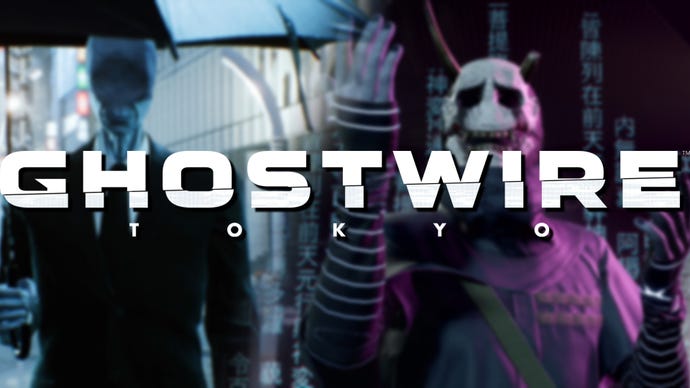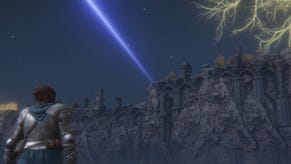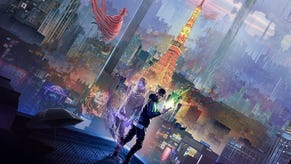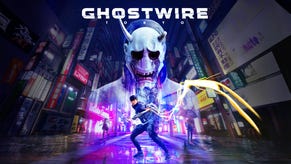Ghostwire: Tokyo review – Possessed of spirit and enchanted by that Shinji Mikami magic
Tango Gameworks’ departure from survival horror into a more action-orientated setup is pretty and weird – and undermined by its writing and story.
Sometimes a game just has a good vibe. It might be one aspect of said game – the art style or in-game world – that really lifts it above everything else, or it could just be that everything bundled together into one package is an exceptionally enjoyable time. In Ghostwire: Tokyo, the vibes are immaculate.
It all begins at the Shibuya Scramble, one of the busiest pedestrian intersections in the whole world. Spooky goings on cause everyone to vanish in a dense fog, leaving only their clothes behind, and an army of spectres descends on the Tokyo Ward. It’s up to the formerly-deceased protagonist Akito and the still-deceased-but-not-really sidekick K.K. to merge into one body – spellweaving capabilities quite literally in hand – and get to the bottom of the haunting of Shibuya.
Departed creative director Ikumi Nakamura once lovingly described Ghostwire: Tokyo as “spooky” in a memorable E3 speech, and there isn’t a better word to sum up the game. Shop shutters slam for no rhyme or reason as you bound around Shibuya, building interiors rearrange themselves like they’re guts being toyed with, flying shades prowl over rooftops, and the entire thing is watched over by an ominous red moon. Ghostwire: Tokyo really is spooky, then.
Making a world devoid of other actual humans feel alive is no easy task. Ghostwire: Tokyo succeeds in making the desolate streets of Shibuya feel vibrant thanks to fleeting events, like a party of ghosts descending on human spiritual remains to drag them into the afterlife, prompting you to race around and save everyone before they’re dragged to hell. There’s also a procession of demons that’ll periodically roam Shibuya, and you’ll need to fight like hell without your ethereal abilities if they find you.

Ghostwire: Tokyo’s vertical open world is a new venture for developer Tango Gameworks though, and the growing pains are evident. Lodged around Shibuya are Torii Gates, acting as beacons that suck up surrounding fog when activated, revealing a new portion of the map. The presence of so many towers around Shibuya feels a little wrought at times, as though Tango borrows from open world design from a decade ago without a fresh perspective or a unique spin. If even Ubisoft can grow out of this, you'd expect other studios can, too.
The saving grace of the Torii Gates is that they open up some brilliantly eclectic side stories. Generally initiated by interacting with the spiritual remains of humans that were vanquished by the fog, side missions might have you taking a haunting subway trip to check out a local legend, rescuing a tanuki and his crew after they had a day trip to Shibuya and got separated, or rescuing someone from being treated like a literal dog by their brother. Ghostwire: Tokyo’s side stories are wildly unpredictable, and that’s excellent.
The writing generally leaves a bit to be desired, though. Akito and K.K. strike up a buddy routine in no time, playing off each other with wry remarks and wit, and you generally don’t go more than a minute in Ghostwire without some remark from one of the pair. Tango’s leading lads only work because they’re playing off each other, however, and you get the sense either one of them would feel relatively one-note and flat without the other. Still, Akito is never without K.K. in his Shibuya hijinx, so there's always that interplay underpinning the game's otherwise spooky tone. The pair are serviceable, but nothing more.
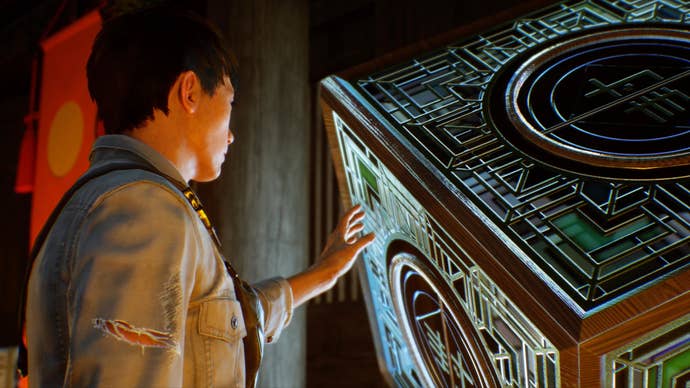
Shibuya’s absence of human noise pollution paves the way for otherworldly sounds from the demonic Yokai. And that's for the best, because and Ghostwire: Tokyo’s sound design is exemplary. You’ll hear sinister giggling and turn a street corner to find headless schoolchildren milling about, or scraping like nails along a chalkboard heralding an imposing Yokai dragging scissors with blades the size of swords behind it. It all folds into that sinister spooky vibe that was promised for this game years ago – and the creature sounds meld brilliantly with the PlayStation 5’s 3D audio capabilities, too. The result, deftly weaving together sound and tech like this, is eerie an paranoia that manifests often; you can be looking at an empty street but hear a shutter slam shut or a demon moaning anywhere around you, pinpointing exactly in which direction it's assailing your ears from.
Ghostwire: Tokyo is wildly different from anything Tango Gameworks has produced. Gone are the third-person shooter trappings of studio head Shinji Mikami’s Resident Evil 4 that translated so well to The Evil Within, and absent is the dreary, murky art style and creature design that naturally lent itself to the aforementioned survival horror game. This Tokyo-set caper feels like Tango kicking off the training wheels and hitting its stride, putting on a dazzling showcase with brilliant lights and colours, contrasting strongly to the hideous creatures that permeate Shibuya.
Nowhere is the shift from survival horror to action horror more evident than in Ghostwire’s frenetic combat. You’ll duck and weave through outstretched arms and gnashing blades, hitting the block button at the very last second before an attack lands to parry it and earn precious spectral ammo. Your hand then roars to life with wind, fire, or water energy, peppering your attackers with ranged strikes until their spiritual core is exposed in their midriff, and you can rip it from them and send them screaming back to where they came from.
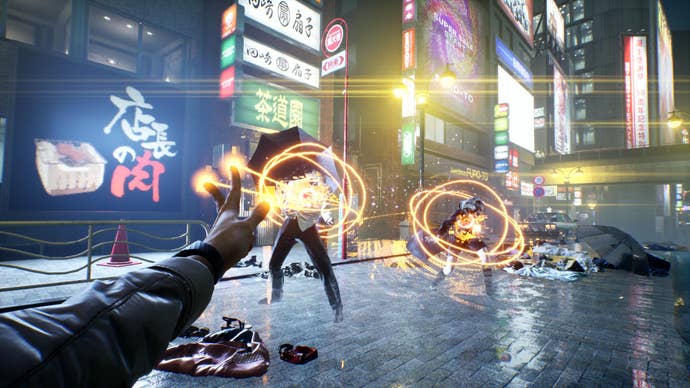
It’s all absolutely brilliant, the cherry on top of Ghostwire’s absorbing recreation of Shibuya. That the action is regularly confined to tight areas of Tokyo’s backstreets but the fact that it never feels overwhelming or too in-your-face is a great testament to Ghostwire: Tokyo’s combat design. Tango routinely throws a bunch of menacing foes at you, but gives you plenty of tools to have fun with, too – it's a delicate, fun balancing act. The final act of grabbing a Yokai’s spiritual core from range and pulling it out of them is a fabulous way to wrap up each combat instance, as the DualSense controller creaks and whines while you hold down the left trigger.
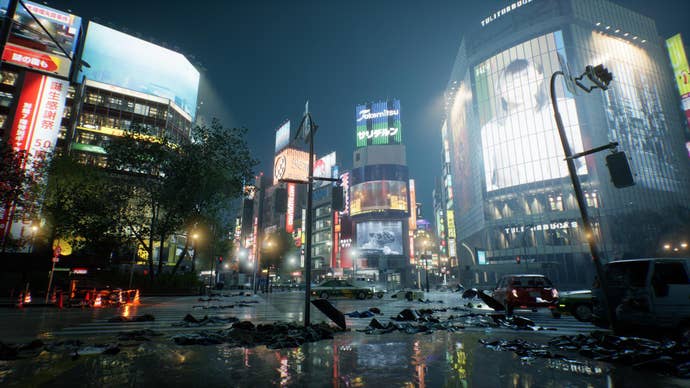
Ghostwire: Tokyo is an impressively bold step in a new director for Tango Gameworks, and it pays off beautifully. Tango’s artists and designers are working wonders with zany and menacing creatures, set against the wonderful backdrop of a colour-struck Shibuya. While its leading pair and open world design stumble at times, Ghostwire’s wonderfully weird side stories and engrossing combat, more than pick up any slack and work in harmony with the game's more zany and offbeat elements to create a world that hasn't just got looks, but one hell of a spirit, too.
